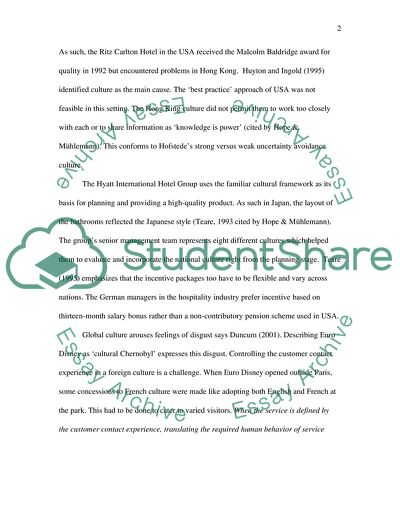Cite this document
(How National Cultures Impact the Operations of Hospitality Enterprises Article, n.d.)
How National Cultures Impact the Operations of Hospitality Enterprises Article. Retrieved from https://studentshare.org/marketing/1705539-in-the-form-of-an-essay-critically-analyse-the-following-statementnational-cultures-have-no-impact-upon-the-way-in-which-hospitality-enterprises-operate-when
How National Cultures Impact the Operations of Hospitality Enterprises Article. Retrieved from https://studentshare.org/marketing/1705539-in-the-form-of-an-essay-critically-analyse-the-following-statementnational-cultures-have-no-impact-upon-the-way-in-which-hospitality-enterprises-operate-when
(How National Cultures Impact the Operations of Hospitality Enterprises Article)
How National Cultures Impact the Operations of Hospitality Enterprises Article. https://studentshare.org/marketing/1705539-in-the-form-of-an-essay-critically-analyse-the-following-statementnational-cultures-have-no-impact-upon-the-way-in-which-hospitality-enterprises-operate-when.
How National Cultures Impact the Operations of Hospitality Enterprises Article. https://studentshare.org/marketing/1705539-in-the-form-of-an-essay-critically-analyse-the-following-statementnational-cultures-have-no-impact-upon-the-way-in-which-hospitality-enterprises-operate-when.
“How National Cultures Impact the Operations of Hospitality Enterprises Article”, n.d. https://studentshare.org/marketing/1705539-in-the-form-of-an-essay-critically-analyse-the-following-statementnational-cultures-have-no-impact-upon-the-way-in-which-hospitality-enterprises-operate-when.


